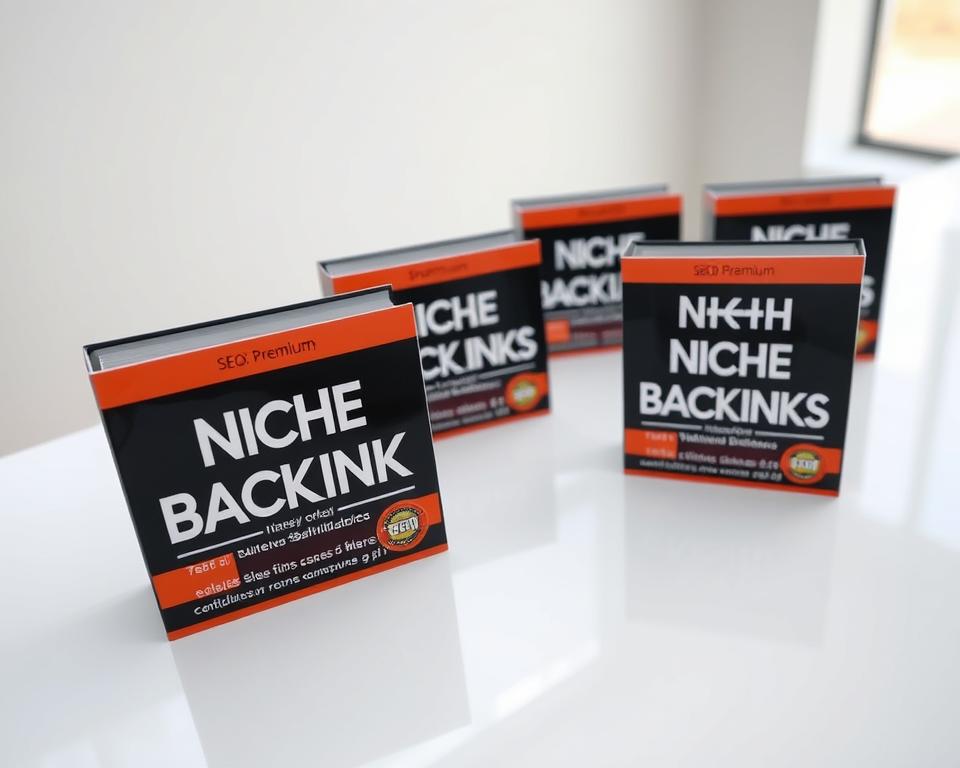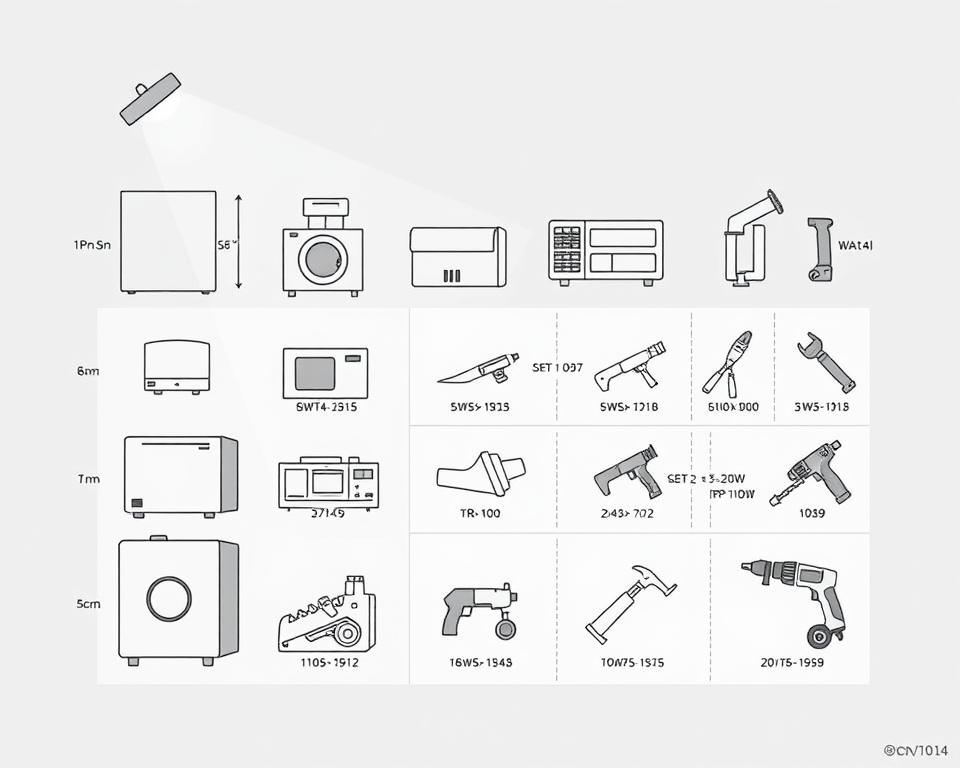Reveal Grand Abstract Wall Décor For Your Home
Eleanor Hartwell’s loft in Brooklyn began as a chilly, characterless space. By hanging a six-foot abstract painting in deep blue and gold tones, the atmosphere was completely revitalized. Friends couldn’t believe the metamorphosis, showcasing the ability of large abstract canvases to redefine a home.
Both BigArtify and AbstractXL channel this transformative energy. Helmed by Ella Lin and Eleanor Hartwell, each studio fuses time-honored Big Canvas Art practices with cutting-edge design. Every artwork is created on high-quality canvas using archival pigments for lasting vibrancy.
Large abstract canvases convey meaning silently. From striking geometric motifs to fluid organic forms, it stirs feelings. They apply multiple coats of museum-quality paint to craft depth and tactile interest, rendering each canvas singular. With lifetime guarantees and free global shipping, adding gallery-quality art to your home is effortless.
Your walls are ready for a statement piece. A perfect canvas can elevate mundane rooms into remarkable environments. We’ll guide you in picking canvases that align with your aesthetic and improve your home’s vibe.
Understanding the Appeal of Large Abstract Wall Art
Abstract art sparks a dialogue between the artwork, your living space, and all who see it. Unlike traditional paintings, abstract pieces encourage personal interpretation and emotional connection. Such expressive liberty cements luxury abstract wall decor as a top pick for contemporary home designers.

How Abstract Art Shapes Mood
An expansive abstract canvas offers more than just coverage. It sets the mood for your entire room. Dynamic strokes and vivid hues invigorate, whereas gentle curves and muted tones soothe. Evidence suggests abstract imagery enhances creative thought and alleviates tension by inviting personal interpretation.
How Size Transforms a Room’s Atmosphere
When selecting statement wall pieces, scale is crucial. Oversized canvases command focus and ground the decor. They add visual weight that balances furniture and architectural features. An oversized canvas can make low ceilings appear higher and narrow rooms feel more spacious.
Why Homeowners Choose Abstract Over Traditional Art
Today, art collectors and design professionals favor abstract art for several reasons:
- Versatility across different decor styles
- Classic look that stands the test of time
- Subjective interpretation for each person
- Flexibility to complement changing color schemes
Interior designers and architects team up with artists to create luxury abstract wall decor that transforms spaces. This collaboration ensures each piece improves daily life and serves as a sophisticated focal point.
Selecting Your Dream Large Canvas
Choosing the right big canvas art is more than just picking a design. It needs to fit room proportions and traffic patterns. Plus, it must establish design balance. Many companies now offer customizable sizing options. So you can commission giant canvases to your precise measurements.
With this versatility, every wall can become a centerpiece. Whether it’s a cozy reading nook or an expansive living room, the possibilities are endless.
How to Measure for Perfect Canvas Size
Start with precise wall measurements. Aim for canvases spanning roughly 60–75% of the wall’s width. E.g., on a 120″ wall, choose art 72–90″ across.
Allow a margin of 6–8 inches around the piece. This prevents the space from feeling cramped.
Room Usage and Art Placement
Plan around daily movement patterns. In high-traffic areas like hallways or entryways, oversized modern canvas prints should be hung higher. This avoids accidental bumps.
Sitting areas and sleeping quarters grant placement freedom. Here, people typically view art while seated or relaxed.
Matching Art Scale to Ceiling Height
Standard 8-foot ceilings work well with horizontal pieces up to 48 inches tall. Rooms with 10-foot or higher ceilings can showcase vertical extra large wall art.
That balance ensures the piece complements rather than overpowers. It also makes a bold statement.
Exploring Color Palettes in Large Abstract Paintings
Selecting the right palette in abstract art can alter a room’s atmosphere. From bold statement pieces to subtle background accents, the right palette transforms your space into a personal sanctuary. Contemporary painters provide infinite color customizations to align with your style and decor aims.
Vibrant and Colorful Abstract Paintings for Energy
Bright, energetic artwork brings life to neutral spaces. Colorful abstract paintings with fiery reds, zesty oranges, and sunny yellows infuse warmth and thrill. These pieces work beautifully in:
- Media rooms craving vibrancy
- Exercise areas requiring drive
- Studios hungry for creativity
Classic Monochrome Abstracts
Enduring black and white wall art transcends trends. These Bigartify pieces add sophistication without competing with existing decor. High contrast fosters intrigue yet retains class. From sleek studios to heritage houses, monochrome canvases flexibly suit any era or scheme.
Calming Blue Abstracts
A blue abstract painting brings calm and tranquility to bedrooms and meditation spaces. Marine-hued canvases craft soothing ambiances. Pale blues visually enlarge tight quarters; rich navy lends opulence to bigger areas.
Single-Hue Abstracts
Monochrome canvases highlight surface and shape rather than strong color shifts. These pieces let subtle variations in shade and technique take center stage, creating sophisticated focal points that complement clean, modern interiors.
Techniques Behind Modern Abstract Textures
The allure of textured abstract artwork lies in its sensory engagement. Natural or artificial light on textured surfaces yields shifting contrasts and depth. These elements evolve with the day, bringing walls to life in a way flat prints cannot.
Creators blend classical methods and new processes to forge lasting modern home pieces. Selecting archival acrylics and oils safeguards vibrancy over the long term. Choosing premium, acid-free paints ensures longevity by blocking fade and yellowing.
You can request customized texture intensities. Some prefer subtle variations that softly catch light. Others seek dramatic three-dimensional surfaces that command attention. Such tailorability permits perfect fusion of texture and interior style.
Knowing these approaches lets you pick art that improves your environment. Textured works thrive in rooms with natural light, while smoother finishes are better suited for spaces with controlled lighting. This insight enables you to choose art that turns your walls into captivating focal points.
Best Sources for Large Abstract Canvases
Searching for extra large wall art on the web uncovers endless options. Leading web galleries combine masterful artistry and simple personalized ordering. Identifying quality markers can streamline your search, ensuring your investment endures for years.
Material Standards for Museum-Quality Art
It all starts with the underlying materials. Professional painters choose heavy-duty canvases that stay taut and true. Essential features to seek include:
- Robust stretcher bar frames
- pH-neutral substrates to block discoloration
- Strengthened edges for longevity
- Smooth, primed surfaces for paint adhesion
Platforms like BigArtify and AbstractXL focus on these materials in their original acrylic abstract art. Their collections showcase how superior materials elevate visual impact.
Museum-Grade Paints Explained
Professional pigments protect hues against UV and time. These paints resist fading from UV light and environmental factors. Following archival guidelines ensures enduring vibrancy.
“Within a few years, subpar pigments fade dramatically. Museum-quality paints protect your art for decades.”
Customization Options for Dimensions and Colors
Today’s artists provide flexibility to align with your vision. Whether crafting gallery wall abstract paintings or a single oversized piece, options include:
- Tailored dimensions to fit your wall perfectly
- Hues tweaked to match your interior
- Surface depth options for tactile appeal
- Frame selections to complete the look
This bespoke process tailors the canvas to your environment.
Signature Canvases for Your Home
Your walls are blank canvases, ready to showcase your personality. Bold canvases transform plain rooms into reflections of you. The right artwork makes your home a true reflection of yourself.
Living Room Art Placement Tips
A single piece of Large Abstract Wall Art can anchor your entire living room design. Place it above your sofa or fireplace to draw eyes immediately into the space. Perfect art sparks dialogue and defines the room’s ambiance.
Keep these guidelines in mind:
- Center artwork at eye level (typically 57–60 inches from floor)
- Allow a 6–8″ gap above seating and below art
- Choose pieces that span two-thirds of your sofa width
Transforming Corporate and Commercial Spaces
Businesses use statement wall pieces to communicate their brand values without words. A striking canvas in a hotel foyer sets the tone instantly. Corporate offices select art that inspires creativity and professionalism.
Art isn’t just decoration in commercial spaces—it’s part of the brand experience.|In business settings, art transcends decor—it amplifies the brand story.|Commercial art does more than decorate—it embodies corporate identity. Enterprises such as Google and Airbnb showcase bespoke art to enrich offices.
Gallery Wall Abstract Paintings Arrangements
Arranged clusters of art provide striking aesthetic appeal. Combine varying dimensions to forge dynamic flow. Use the biggest canvas as the focal starting point, then layer in smaller pieces.
“Top gallery layouts weave narratives via hue, form, and flow.”
Maintaining equilibrium is crucial in multi-piece displays. Leave 2–3″ gaps for visual relief. The installation ought to appear unified but lively.
Investing in Acrylic Abstracts
Purchasing original acrylic abstract art doubles as an investment. Its value tends to rise as artists’ reputations grow.
Creators employ premium substrates and paints. So their pieces endure for generations. The quality of acrylics and canvases prevents fading, keeping the art vibrant.
Desire for luxury abstract wall decor keeps growing. Buyers recognize art’s aesthetic and monetary value. Original pieces offer unique benefits:
- Each is singular and cannot be duplicated
- Purchases back active creators and their futures
- Their market price often climbs over the years
- Their worth transcends monetary measures
Trustworthy dealers provide authenticity certificates and warranties. They confirm legitimacy and safeguard your asset. And they arrange protected, insured transport.
Each original canvas narrates the artist’s journey. They reflect the artist’s vision and skill. Thus, they become valued heirlooms. Their relationship intensifies as time goes by.
How to Hang Large Canvas Art
Installing oversized modern canvas prints demands meticulous planning and specialized techniques. These large pieces can weigh between 15 to 50 pounds, necessitating careful installation for both safety and aesthetic appeal. With the correct approach, your big canvas art will become a striking centerpiece, transforming your space for years.
Safe Mounting Methods
- Install wall anchors rated for at least double your artwork’s weight
- Employ D-rings plus hanging wire for balance
- Hang so the center sits around 57–60″ above the floor
- Maintain 6–8″ clearance under the canvas above furnishings
Perfect Illumination for Big Art
Correct lighting highlights a large painting’s details. Natural light is ideal, but direct sunlight can cause color fading. Installing picture lamps roughly 30″ above the canvas yields dramatic lighting. Use 30° angled track lights to reduce shine and emphasize surface detail.
Protecting Your Investment with Proper Care
Top-grade giant prints demand proper upkeep. Gently brush off dust each month with a clean, soft rag. Control moisture at 40–50% to protect frame integrity. Choosing museum-quality supplies keeps colors vivid over time. Following these tips safeguards both aesthetic and investment value.
Room-Specific Abstract Decor
Every area requires pieces that suit its function. Luxury abstract wall decor works beautifully in settings from restful retreats to dynamic work zones. Ideal art reshapes ambience as well as appearance.
Serene Master Bedroom Canvases
Your bedroom should be a personal sanctuary. Select delicate, wave-like textured abstract artwork in serene hues. These hues create a serene space ideal for relaxation. Look for pieces with gentle strokes in these soothing shades:
- Warm neutrals like beige, taupe, and cream
- Pale blues and light purples to soothe
- Blush pinks and dusty roses for romance
Dining Room Conversation Starters
Dining rooms thrive on bold minimalist large canvas art that sparks conversation. Opt for canvases showcasing energetic flow or bold hue pairings. It needs to balance refinement with warmth to inspire mealtime conversations.
Home Office Inspiration Through Art
Work areas call for art that stimulates focus without disrupting workflow. Textured abstract artwork in deliberate hues promotes innovation and maintains formality. Blues and greens help focus, while orange or yellow adds a spark to your workday.
Working with Artists for Custom Minimalist Large Canvas Art
Commissioned art realizes ideas that off-the-shelf works can’t fulfill. Working alongside artisans ensures your minimalist large canvas art reflects your unique taste and area. Seasoned creators excel at converting your concept into breathtaking canvases designed for your space.
It begins by defining your concept. Artists need to know several key details:
- Exact measurements for the installation area
- Preferred palette to harmonize with your furnishings
- Texture and finish options
- Design motifs ranging from subtle to daring
Top creative groups unite painters versed in classic and modern methods. These creators excel at crafting both subtle minimalist pieces and vibrant colorful abstract paintings. Every detail is tailored to your precise requirements.
Ongoing dialogue is key to a successful collaboration. Artists typically provide sketches or digital mockups before starting your large abstract painting. This partnership helps deliver a canvas beyond your hopes. They often provide adjustment stages for color, design, and mood refinement.
Commission costs depend on dimensions, intricacy, and supplies. Most studios offer upfront, itemized pricing. The cost becomes worthwhile when you own a custom artwork that reshapes your home and showcases your flair.
Final Thoughts
Grand abstract paintings can turn common rooms into captivating environments. Brands such as BigArtify and AbstractXL know art communicates on a profound level. It creates meaningful connections with our living spaces. These businesses offer more than just paintings – they provide carefully curated experiences that reflect your personal style and identity.
From serene blue abstracts to bold black-and-white canvases, endless choices await in modern collections. Between clean minimal setups and vivid centerpiece works, uncovering your ideal art is a thrilling exploration. The diverse portfolios available ensure that every homeowner can discover pieces that resonate with their unique aesthetic.
As you’ve learned throughout this guide, selecting large abstract wall art involves considering size, color, placement, and personal taste. An ideal artwork might ignite discussion, anchor décor, or deliver daily pleasure. Thanks to expert creators and premium producers on the web, elevating your decor with gorgeous abstracts has never been simpler.
FAQ
What sizes are available for big canvas art and large abstract paintings?
With BigArtify, choose from four formats, preset sizes, or bespoke measurements. AbstractXL features various orientations and tailor-made sizes, plus infinite texture options. Be it bold hotel lobby art or intimate study murals, they customize sizes to your specs. Selections span from colossal canvases to small-scale works.
Which should I pick: vivid abstracts or black and white art?
It hinges on your room’s character and individual taste. Colorful abstract paintings bring energy and vibrancy to rooms. Monochrome art delivers classic elegance and adaptability. They both adjust palettes to suit your design goals. Consider your existing decor, lighting, and the mood you want to create when making your selection.
What materials are used in creating original acrylic abstract art?
Both companies use professional-grade oils and acrylics that retain brilliance decade after decade. BigArtify採用高品質画布和档案级颜料。 AbstractXL创作时选用优质画布与博物馆级颜料。 高质量材料确保您的抽象艺术在多年后依旧明艳动人,是对家庭美学的持久投资。
Is it possible to personalize texture levels?
Absolutely! Both BigArtify and AbstractXL offer endless texture possibilities to create art that feels uniquely personal. Artists fine-tune texture per your direction, be it gentle tonal variance or dramatic 3D layering. The same flexibility applies to size, hue, and coating, so your canvas fits your room flawlessly.
What comes with a luxury abstract art order?
每件作品均附带100%满意保证、终身质量保障及全球免费快递。 BigArtify and AbstractXL alike focus on transparent processes and dependable service. 高端材料保障您的投资,让作品多年后依然光彩夺目。
How do oversized modern canvas prints transform different room types?
Oversized canvases play unique roles across rooms. In master bedrooms, it creates tranquil sanctuaries; in dining rooms, it sparks conversation; and in home offices, it provides inspiration. They collaborate with architects and hospitality pros to tailor each canvas to its setting—be it a hotel foyer or private study.
What makes minimalist large canvas art different from other styles?
Minimalist works emphasize form and function, tailored to today’s aesthetic. BigArtify’s portfolio includes tranquil minimalist abstractions, while AbstractXL offers subtle monochromatic textures. They speak volumes via simplicity, spotlighting superior materials and technique without dominating the room.
Tips for perfect gallery wall layouts
Successful multi-piece walls need balanced proportions, gap consistency, and tonal unity. Both BigArtify and AbstractXL can help you select complementary pieces that work together harmoniously. Consider mixing sizes and orientations while maintaining a cohesive color palette or theme. Their creative teams collaborate to design gallery groupings that turn blank walls into captivating showcases.
How does modern decor art differ from classic paintings?
Contemporary home decor art, such as abstract pieces, creates a dialogue between creator, space, and viewer. Unlike traditional representational art, abstract wall art speaks to the soul through color, texture, and form. BigArtify and AbstractXL merge heritage techniques and modern flair, crafting works that improve daily environments into remarkable experiences.
Can large abstract canvases work in offices?
Absolutely—BigArtify and AbstractXL partner with architects, decorators, hoteliers, developers, and hospitality experts. Large abstract works and signature pieces shine in business lobbies, hospitality venues, and retail settings seeking impact. Through these alliances, both companies evolve their catalogs for private and commercial clientele.









